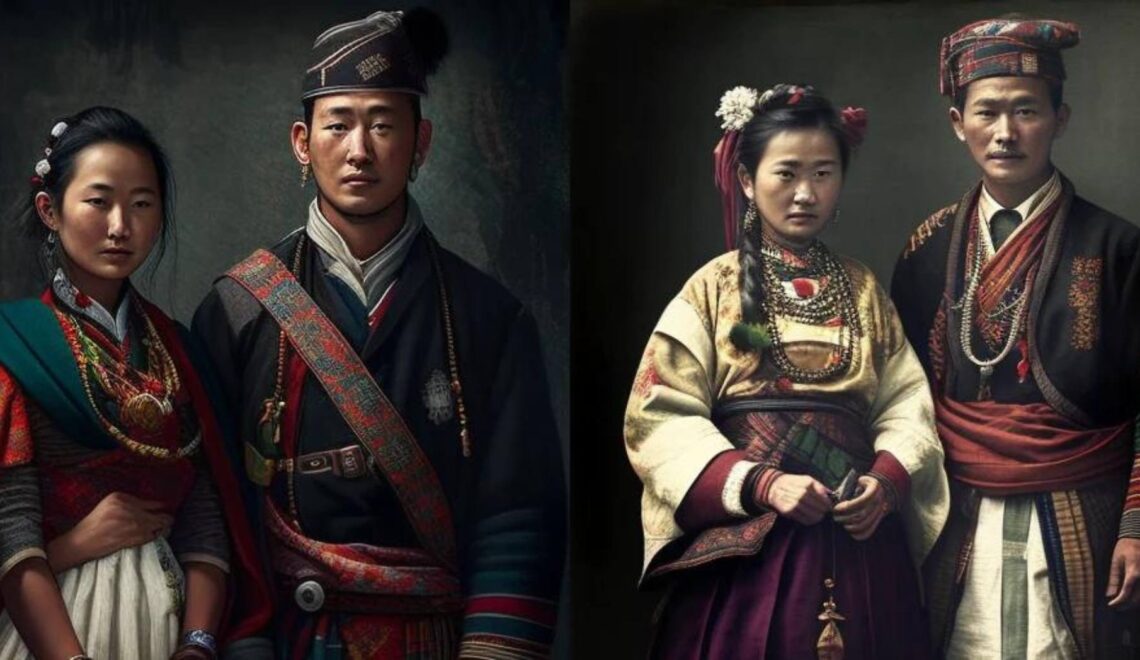
Welcome to the vibrant tapestry of Sikkimese culture, where every fabric fold tells a story of tradition, identity, and resilience.
In the ethereal landscape of Sikkim, nestled within the cradle of the Himalayas, clothing is not merely attire; it’s a reflection of heritage and honor.
Embarking on a journey through the famous clothes of Sikkim reveals a captivating array of garments that speak volumes about the clothes of Sikkim.
The region’s rich cultural tapestry.
At the heart of Sikkimese attire for men lies the majestic bakhu, a robe-like garment exuding the spirit of courage and pride.
Crafted from warm woolen fabric and adorned with vibrant borders, the bakhu is a testament to Sikkim’s warrior legacy.
Paired with the tohr, a snug shirt worn underneath, and the dotho, a graceful wraparound skirt.
Sikkimese men embody a harmonious blend of tradition and sophistication.
Each intricate detail, from the vibrant hues to the meticulous craftsmanship, reflects the deep-rooted cultural ethos of the land.
1. Sikkim Traditional Dress
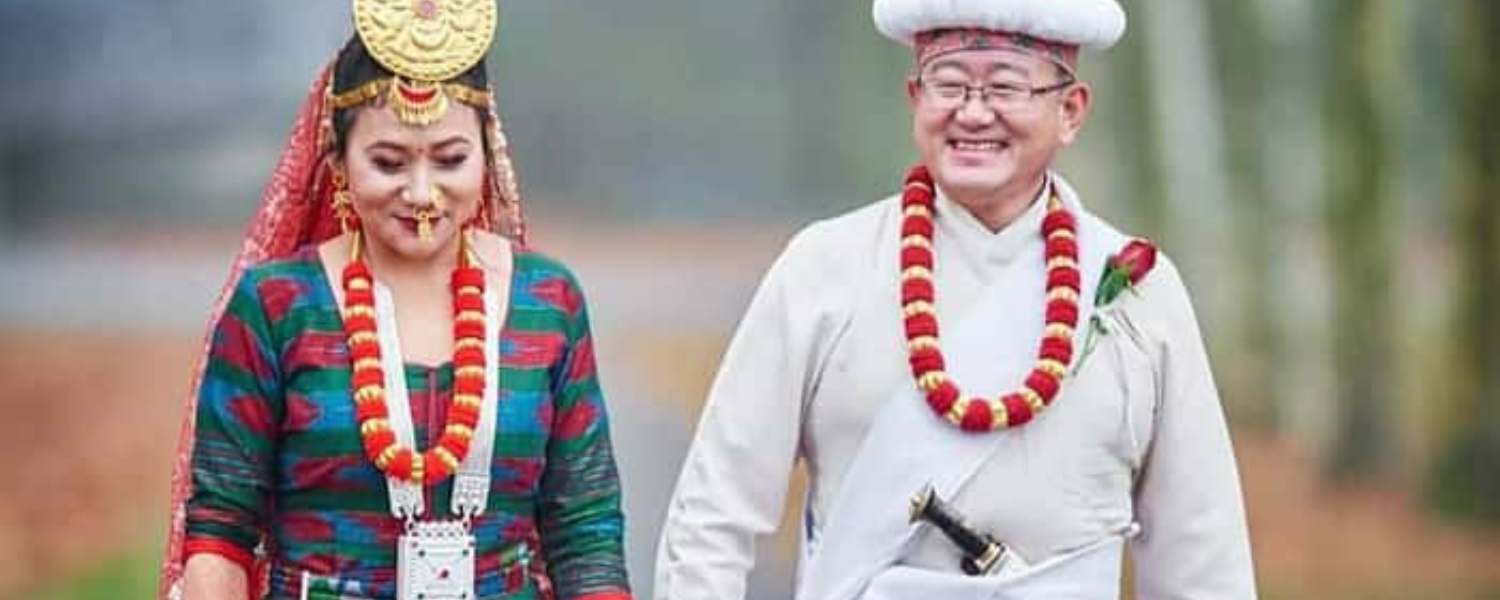
In the vibrant tapestry of Sikkimese culture, the traditional dress holds a special place, reflecting the rich heritage and identity of its clothes Sikkim Wikipedia.
Among the conventional garments, the Kho emerges as a distinctive attire worn by the Bhutia, an ethnic community residing in Sikkim and Nepal.
The Kho is a graceful cloak-style garment that embodies simplicity and elegance in its design.
This traditional attire is characterized by its loose fit, which allows for comfort and ease of movement, ideal for the region’s varying climatic conditions.
Unlike other regional dresses, the Kho is sleeveless, providing flexibility and adaptability to its wearer.
Fastened at the neck on one side and secured near the waist with a silk or cotton belt, the Kho exudes traditional charm.
Its design resembles the Tibetan chuba and the Ngalop go of Bhutan, illustrating.
The cultural interconnectedness of the Himalayan region and information about the clothes of Sikkim.
Wearing the Kho is not merely a fashion statement but a manifestation of cultural pride and identity for the Bhutia people.
It symbolizes their connection to their roots, traditions, and ancestral heritage, making it an integral part of Sikkimese cultural identity.
Its simplicity lies in its beauty, encapsulating the essence of the clothes of Sikkim.
2. Sikkim Dress for Women
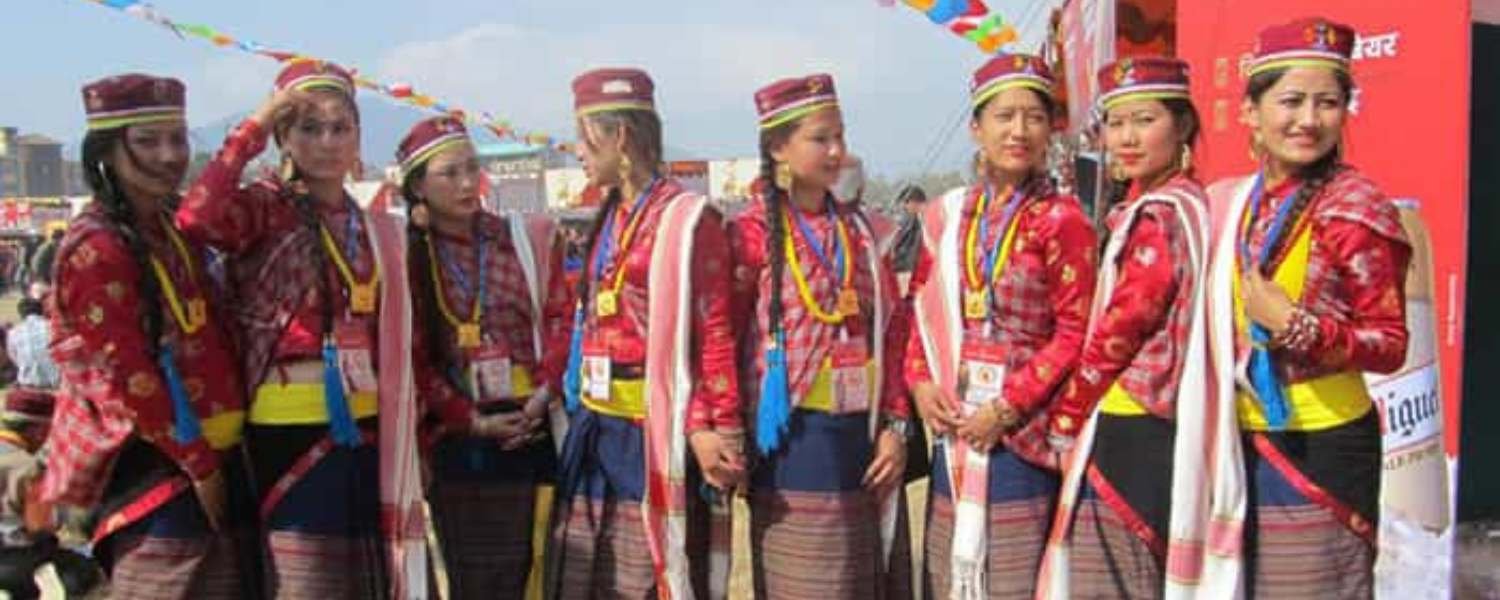
Sikkimese women encapsulate the essence of tradition and elegance.
Their traditional clothing, often called the Sikkim dress for women, is a harmonious blend of intricate designs and symbolic elements.
At the heart of this attire lies the choktsees, eight auspicious symbols deeply rooted in Buddhism.
These symbols are meticulously embroidered on a silk cloth, adorning the attire with spiritual significance and grace.
The choktsees are worn over the honju, a blouse crafted from luxurious silk or comfortable cotton fabrics.
Providing both style and comfort to the wearer.
The pangden, a traditional wraparound skirt, and the kera, a decorative belt, complete the ensemble.
These elements add layers of cultural significance and charm to the attire.
Together, they create a mesmerizing visual tapestry that reflects Sikkim’s rich heritage.
The clothes of Sikkim not only showcase the artistic prowess of its artisans but also serve as a symbol of pride for Sikkimese women.
With their vibrant colors and patterns, these garments are to the region’s cultural diversity and timeless beauty.
Embark on a journey through Sikkim’s sartorial heritage.
where every stitch weaves a story of Sikkim traditional festival, spirituality, and grace of clothes of Sikkim information.
3. Sikkim Dress for Men

In the lap of the Himalayas, Sikkim boasts a rich cultural heritage reflected prominently in its traditional attire.
When it comes to the clothes of Sikkim, particularly for men.
The spotlight falls on the timeless ensemble comprising the bakhu, tohr, dotho, and tharo.
These garments weave together a tapestry of tradition and symbolism passed down through generations.
At the heart of the Sikkimese men’s attire is the bakhu, a majestic robe-like garment.
Crafted from warm woolen fabric, the bakhu is adorned with vibrant borders, infusing it with a splash of color and vitality.
Beyond clothing, the bakhu embodies the warrior spirit, serving as a symbol of strength and heritage.
Accompanying the bakhu are the tohr, dotho, and tharo, completing the ensemble with grace and elegance.
The tohr is a shirt-like garment worn beneath the bakhu.
Providing comfort and additional layers for the chilly mountain climate.
Meanwhile, the dotho and tharo add further layers to the lower body.
Ensuring warmth and protection against the elements of festivals celebrated in Sikkim.
4. Sikkim Dress and Identity
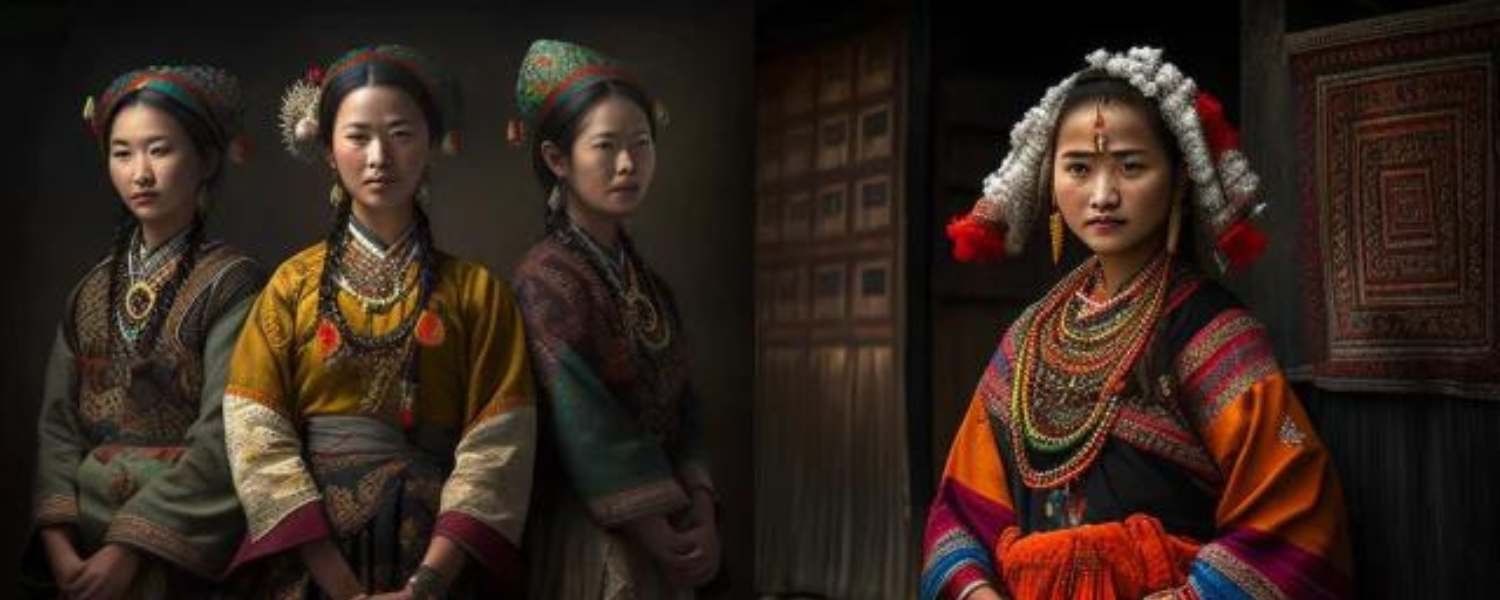
For Sikkimese men, their traditional attire is not merely fabric but a representation of their history and spirit.
At the heart of their ensemble lies the bakhu, a long robe-like garment that embodies the resilience and courage of the Sikkimese warrior.
Crafted from warm woolen fabric, the bakhu boasts vibrant borders that echo the colorful spirit of the region.
Beneath this outer layer, they don the tohr, a snug-fitting shirt that adds layers to both warmth and tradition.
Completing the ensemble is the dotho, a wraparound skirt encircling the waist, adding a touch of grace to their attire.
These garments, passed down through generations, clothe the body and tell stories of courage and tradition.
In a land where every fold carries tales of ancestors and every hue reflects the beauty of the mountains.
The clothes of Sikkim become more than mere attire—they become symbols of identity, connecting the wearers to their roots in every thread.
5. Lepcha Tribe Traditional Dress
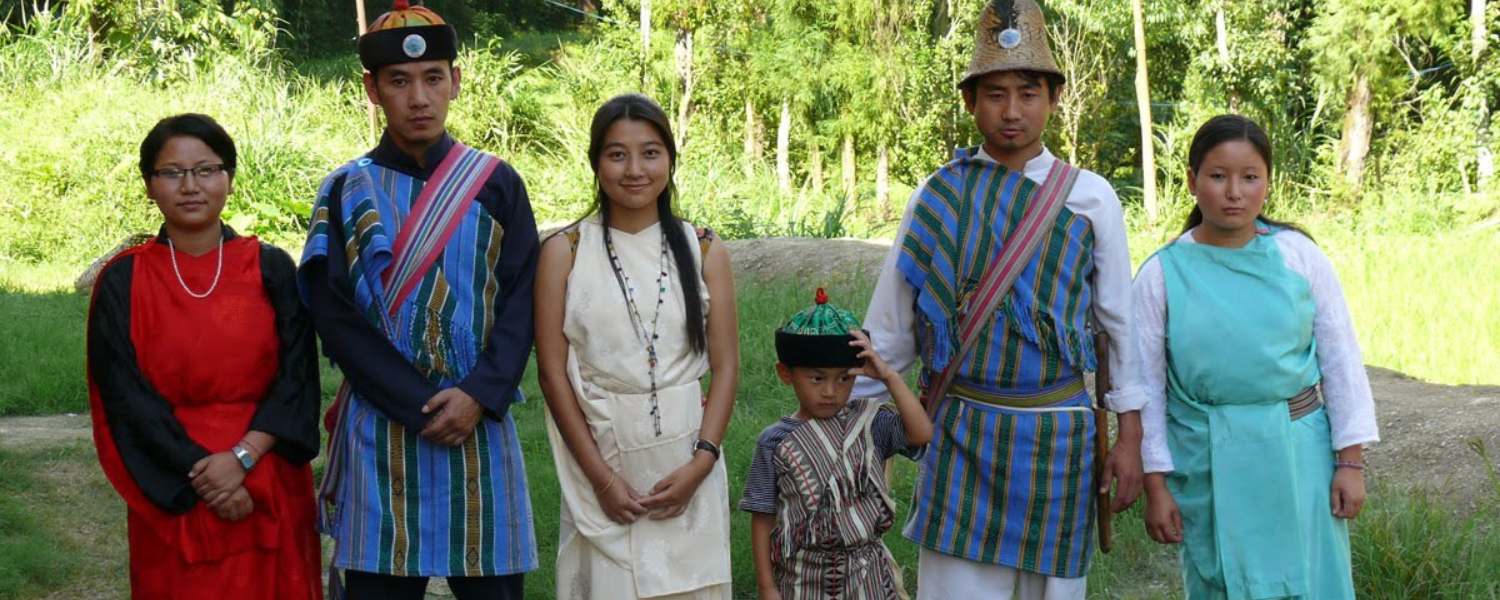
The traditional attire of the Lepcha tribe, indigenous to the Himalayan region of Sikkim.
Showcases a vibrant blend of colors and cultural significance.
Among the Lepcha men, the attire comprises several distinct elements.
They typically wear a colorful sheet known as Thakro, which adds a splash of brightness to their ensemble.
Paired with this is the yenthatse, a traditional shirt that adds elegance to their attire.
Topping off the look is the shambo, a unique cap that holds both practical and symbolic value within Lepcha culture.
Lepcha women’s traditional dress is equally distinctive and steeped in tradition.
The focal point is the Dumbun, a sheet worn in a style reminiscent of a sari, draping gracefully around the body.
Complementing this is the Tago, a loose-fitting blouse that allows for ease of movement.
Reflecting the practical lifestyle of the Lepcha people.
To cinch the ensemble together, women adorn themselves with the Nyumrek.
A belt that serves a functional purpose and adds a decorative element to their attire.
Finally, the Taro, a cap worn with pride, completes the traditional look for Lepcha women.
6. Bhutia Tribe Traditional Dress
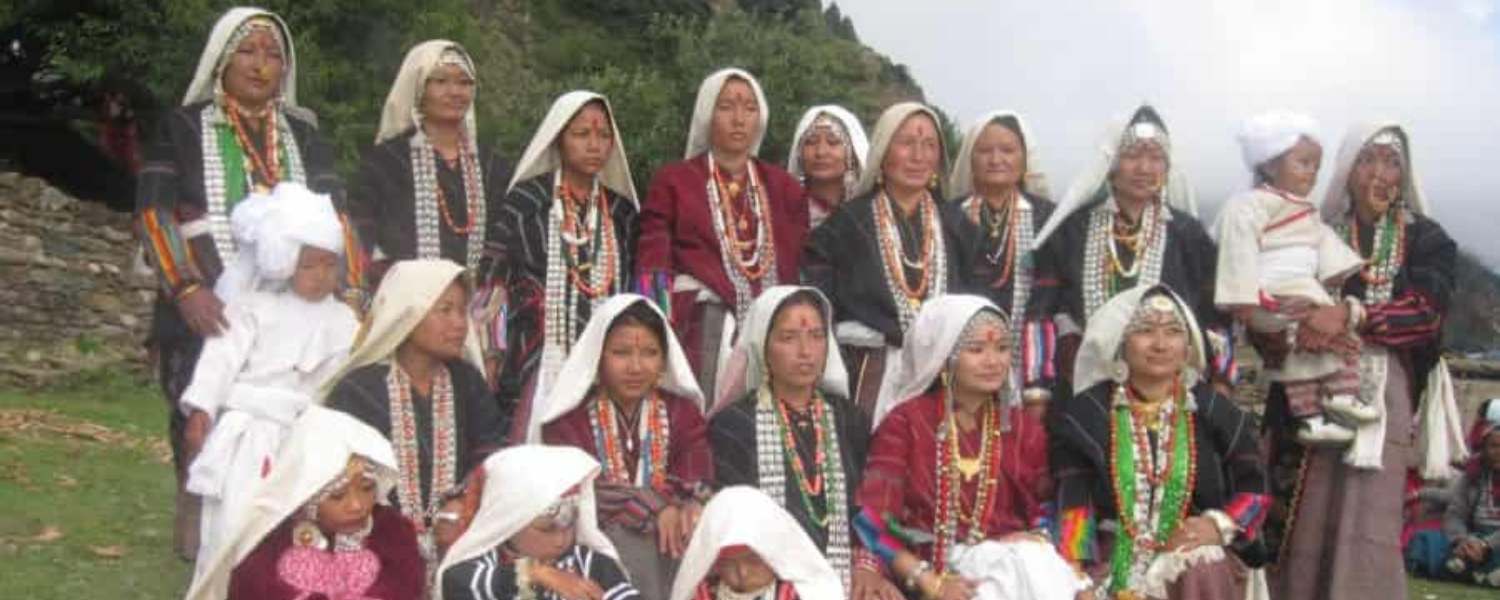
The traditional attire of the Bhutia tribe, an indigenous community of Sikkim, vividly reflects its rich cultural heritage.
Embracing vibrant colors and intricate designs, the clothing is a testament to its deep-rooted traditions.
At the heart of Bhutia men’s attire is the majestic Kho, a robe that drapes elegantly over the body, symbolizing dignity and grace.
Complementing this is the Jya, a waistcoat that adds layers to their ensemble while providing warmth in the chilly mountain climate.
Beneath these garments, the Yenthatse, a traditional shirt, adds further intricacy to their attire.
Often adorned with delicate patterns and embroidery.
To complete the look, the Bhutia men wear a cloth belt known as Kera.
Which serves a purpose and adds a touch of tradition to their attire.
Topping off their ensemble is the iconic Shambo, a cap that holds significant cultural significance.
Often featuring intricate designs and symbols unique to the Bhutia tribe.
7. Nepalese Tribe Traditional Dress
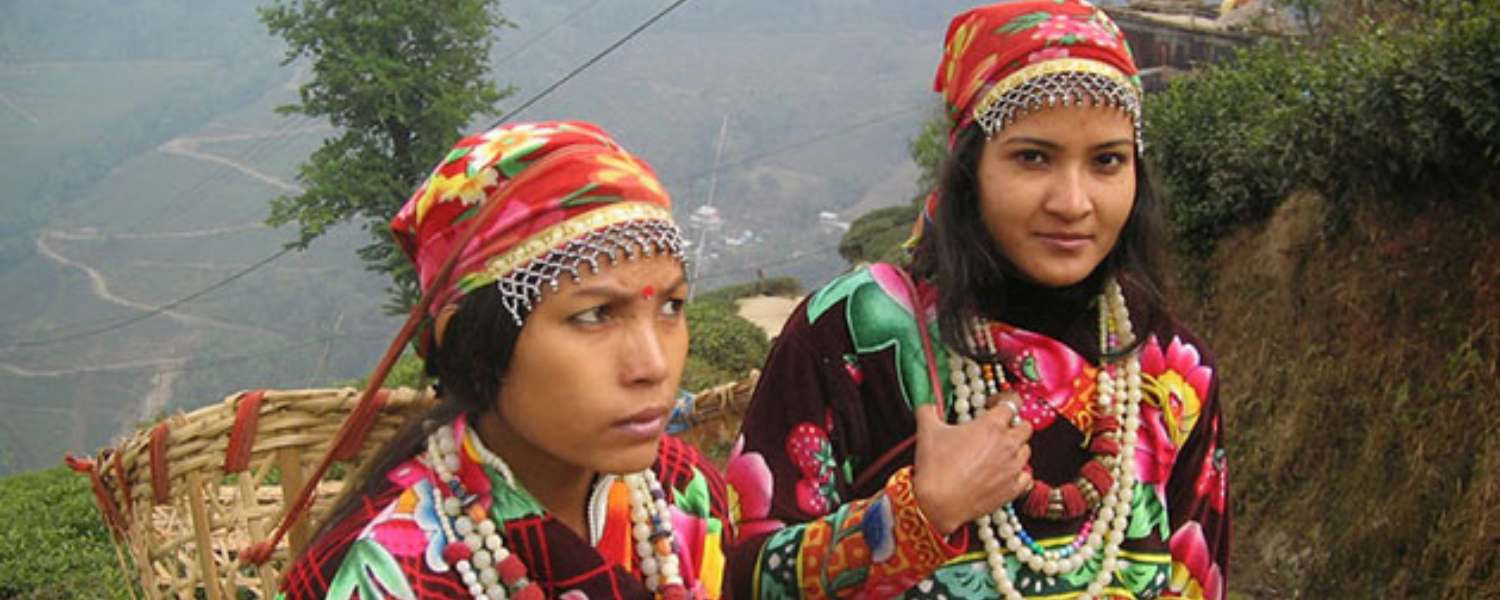
The traditional clothing of the Nepalese tribe is a vibrant reflection of their rich cultural heritage and diverse traditions.
The Sari or Saree holds a significant place among the various conventional attires adorned by Nepali women.
This elegant garment, draped gracefully around the body, showcases intricate patterns and vibrant colors, symbolizing femininity and grace.
Alongside the Sari, women also embrace the Gunyo Cholo and Haku Patasi, which add further layers of cultural richness to their attire.
In addition to its aesthetic appeal, traditional Nepali clothing carries profound cultural significance.
Each garment is meticulously crafted, often incorporating hand-woven fabrics and intricate embroidery.
Representing centuries-old craftsmanship passed down through generations.
These traditional dresses serve as a cultural expression and symbolize familial ties, religious beliefs, and social status within Nepalese society.
Moreover, the attire of Nepali tribes reflects the region’s diverse geographical and climatic conditions.
From the hills to the plains, each community has its unique style of dressing, influenced by local customs and traditions.
This diversity adds to the kaleidoscope of colors and patterns seen in Nepali clothing, making it a fascinating aspect of the country’s cultural tapestry.
8. Traditional Sikkimese Jewelries to Compliment the Attires
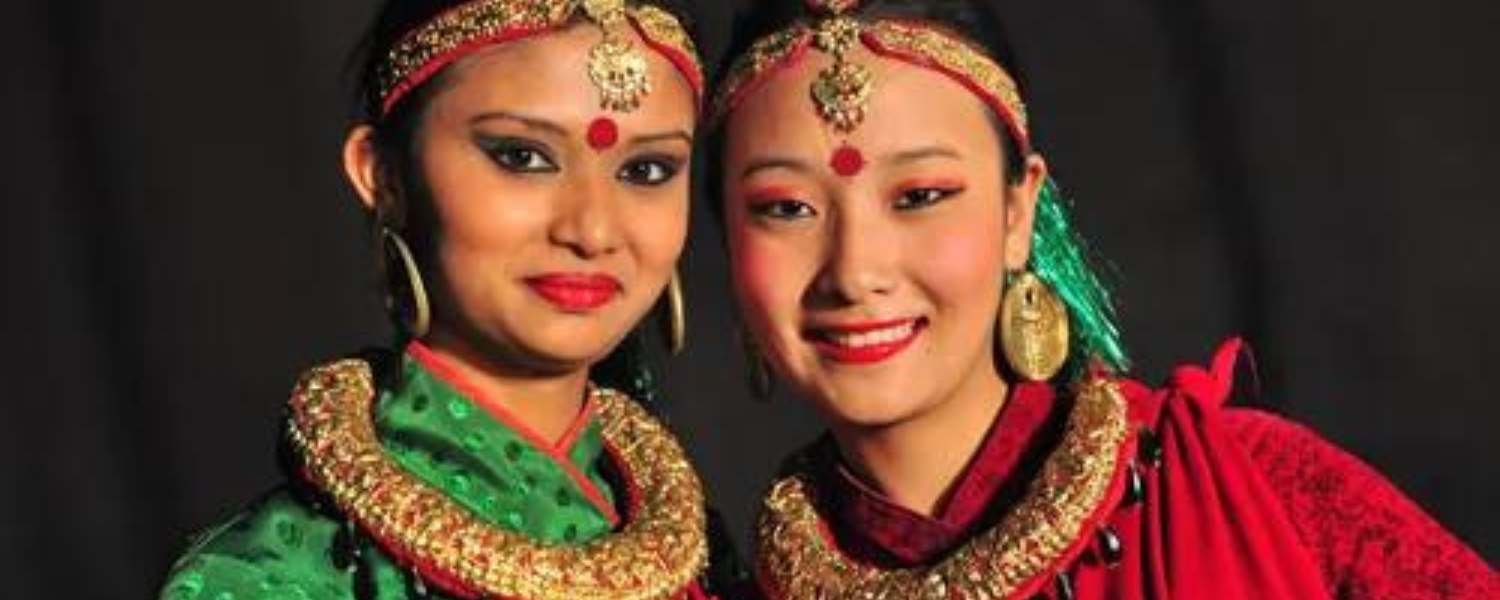
Traditional Sikkimese jewelry plays an integral role in enhancing the beauty and elegance of Bhutia women.
And complementing the vibrant attire of Sikkim.
Adornments such as Yencho (earrings), Khao (necklaces), Phiru (pearl ornaments).
Diu (gold bangles), Khalli (thick silver-coated anklets), and Joko (rings) are cherished elements of their cultural heritage.
These adornments are accessories and embodiments of tradition, history, and craftsmanship.
Yencho, delicate earrings gracefully frame the face, adding a touch of femininity to the attire.
Khao, intricately designed necklaces drape elegantly around the neck, complementing the attire with exquisite craftsmanship.
Phiru, adorned with pearls, symbolizes purity and grace, enhancing the overall appeal of the ensemble.
Diu, golden bangles symbolize prosperity and are often passed down through generations.
Carrying with them stories of family heritage.
Khalli, with their distinct jingling sound, adorns the ankles, adding a musical rhythm to every step.
Joko rings that adorn the fingers complete the ensemble with a subtle yet significant touch of elegance.
Conclusion
In conclusion, the traditional clothes of Sikkim embody not only the region’s rich cultural heritage.
But also reflect the resilience and courage of its clothes of Sikkim people.
The attire, comprising the bakhu, tohr, dotho, and tharo, is more than just garments; it represents a profound connection to Sikkim’s history and ethos.
The bakhu, with its intricate designs and vibrant borders, symbolizes the warrior spirit that has long characterized the Sikkimese people.
Meanwhile, the tohr and dotho add layers of tradition and functionality to the ensemble.
Ensuring comfort and mobility in the challenging terrain of the Himalayas.
Through their attire, Sikkimese men honor their ancestry and showcase a distinct identity that sets them apart.
These clothes of Sikkim are not merely fabrics; they are living embodiments of a cultural legacy that continues to thrive amidst modernization.
Reminding us of the importance of preserving and cherishing traditions for future generations.
FAQ
Q. What traditional attire do Sikkim people wear?
The traditional attire of Sikkim reflects its diverse cultural heritage.
One prominent garment is the Kho, worn by the Bhutia ethnic group.
This loose, cloak-style garment is reminiscent of Tibetan and Bhutanese attire, fastened at the neck and waist with a silk or cotton belt.
Similarly, the Bakhu, also known as Kho, is a significant attire for Bhutia men and women.
Resembling the Tibetan Chuba, it is a cloak-type attire secured at the waist with a belt and tied elegantly at the neck.
Q. What is the significance of traditional clothing in Sikkim?
Traditional clothing in Sikkim represents cultural identity and embodies the region’s rich heritage.
The attire carries with it a sense of tradition, passed down through generations, symbolizing the unique cultural amalgamation present in the state.
Q. What other aspects of Sikkim’s culture are noteworthy?
Apart from traditional clothing, Sikkim boasts a rich cultural tapestry evident in its handicrafts, rituals, and phang lhabsol festival of Sikkim.
The warmth and simplicity of its people, including the Lepchas, Bhutias, and Nepalese, contribute to the vibrant cultural landscape of the region.
Q. How does Sikkim celebrate its cultural diversity?
Sikkim celebrates its cultural diversity through various festivals, rituals, and daily life practices.
The love for tradition and festivities is deeply ingrained in the people, fostering a sense of unity amidst diversity.






